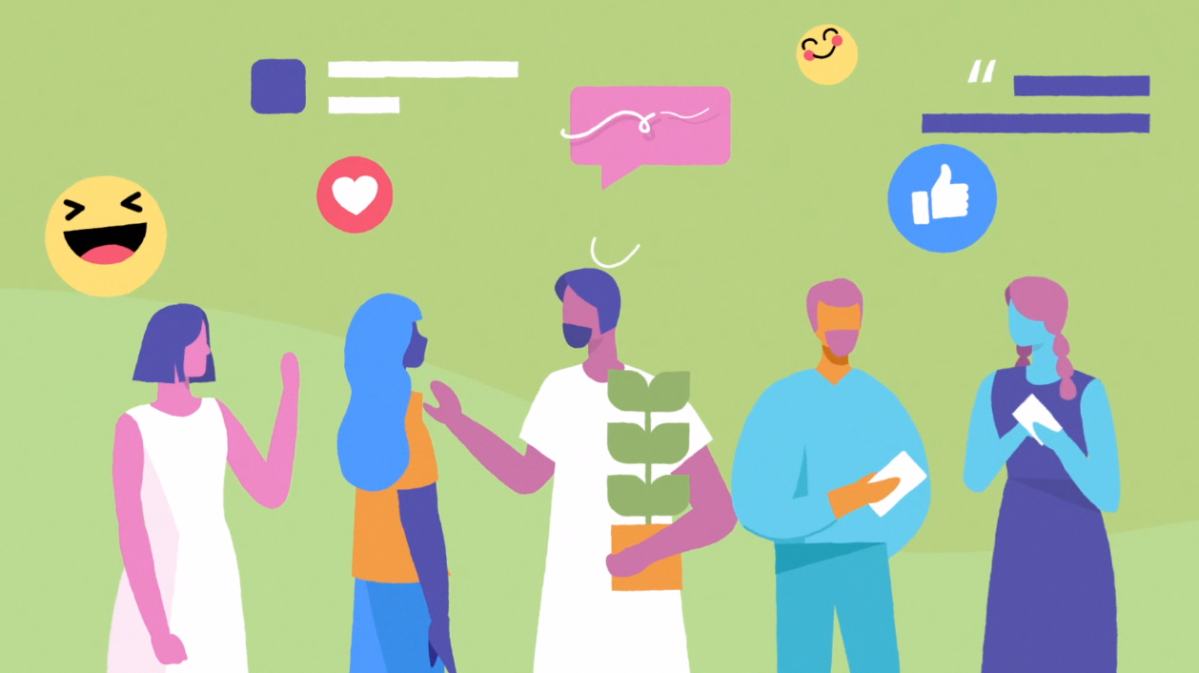Are Social Media Good or Bad for Well-Being?
Introduction

Social media has become an inescapable part of modern life for billions of people around the world, now it appears it’s also one of the reasons people are more polarized in modern times. Facebook, Instagram, and Twitter provide unrivaled opportunities for communication, networking, and sharing of information, but people have questioned why they seem to undermine people’s well-being. Critics counter that platforms designed to captivate—and serve the whims of profit-seeking corporate interests—tend to value clicks over mental wellbeing, to the detriment of users who may develop a destructive dependency, anxiety, or failing self-confidence. Meanwhile, proponents maintain that social media is essential for expression, community, and emotional support. This blog post elucidates the strengths and weaknesses of social media in its impact on well-being, emphasizing issues of architecture, business model, and content.
Body
The main concern for social media is the adverse effects it has on mental health. Studies have shown that frequent use of platforms engineered to increase engagement through algorithms can result in adverse mental health (Twenge, 2019). For instance, Instagram’s focus on visual perfection can lead to unrealistic notions of beauty and the development of body image issues among its adolescent users (Fardouly et al., 2015). These design decisions are not arbitrary but rather reflect business models that reward user attention by generating advertising revenue. Facebook’s algorithm, for example, promotes content that provokes significant emotional responses that capture user attention for more time, but also makes users more vulnerable to polarizing and detrimental content (Vaidhyanathan, 2018).
“Doomscrolling,” or consumption of an uninterrupted flow of bad news and distressing information, has been associated with increased levels of anxiety and depression (Bendau et al., 2021).
But social media also has a lot of upsides that can add to your overall well-being in life. Platforms are important for keeping in touch, helping people in the moment, and offering emotional solace, especially to those who may feel socially distanced. Research indicates that online communities enable users to be connected for cohesive psychological support in adversity (Hampton & Wellman, 2018). For those excluded from dominant discourse, social media may serve as a platform for advocacy and to mobilize coalitions not necessarily visible in mainstream media (Murthy, 2018). For instance, the #MeToo and Black Lives Matter movements were lifted to global audiences and support through platforms like Twitter and Instagram, which showcased the ability of social media to drive social change and community support.
Furthermore, users can network through social media like LinkedIn for career development and self-awareness. Online spaces also facilitate sharing of learning material, political activism, and participation in global news, helping the public stay informed and engaged with global and local issues (Ellison et al., 2011).
However, the start to the day on social media can determine whether the overall well-being social media provides is a negative or positive one. High levels of passive content consumption—e.g., decontextualized browsing—have been associated with lower levels of mental health, whereas active forms of content engagement, such as commenting and sharing, are generally beneficial (Burke, Kraut, 2016). This distinction underscores the dual nature of social media: empowering and dangerous — largely depending on the behavior of us, the users, and the design of the platforms.
Conclusion
It’s not that simple: The influence of social media on user welfare is actually a nuanced one based on interactions between platform design, user choices, and business motives. Social media, despite creating opportunities for connection and support, is all about attention, and that’s how social media companies make money (they’d be more interested in users’ mental health otherwise). In the future, designers of platforms must consider their ethical responsibilities and the well-being of their users as well as their profits. The possible impacts of platform design for users could facilitate healthier social media engagement. A balance of good online relationships and thoughtful use can help you get the most from the technology—and avoid the worst.
References
- Bendau, A., Petzold, M. B., Apfelbacher, C., Krause, R. W., & Teufel, M. (2021). Associations between anxiety, depression, and doomscrolling during the COVID-19 pandemic. Cyberpsychology, Behavior, and Social Networking, 24(2), 86-90.
- Burke, M., & Kraut, R. E. (2016). The relationship between Facebook use and well-being depends on communication type and tie strength. Journal of Computer-Mediated Communication, 21(4), 265-281.
- Ellison, N. B., Steinfield, C., & Lampe, C. (2011). Connection strategies: Social capital implications of Facebook-enabled communication practices. New Media & Society, 13(6), 873-892.
- Fardouly, J., Diedrichs, P. C., Vartanian, L. R., & Halliwell, E. (2015). Social comparisons on social media: The impact of Facebook on young women’s body image concerns and mood. Body Image, 13, 38-45.
- Hampton, K. N., & Wellman, B. (2018). Lost and saved… again: The moral panic about the loss of community takes hold of social media. Contemporary Sociology, 47(6), 643-651.
- Murthy, D. (2018). Twitter: Social communication in the Twitter age. Polity.
- Steers, M. N., Wickham, R. E., & Acitelli, L. K. (2014). Seeing everyone else’s highlight reels: How Facebook usage is linked to depressive symptoms. Journal of Social and Clinical Psychology, 33(8), 701-731.
- Twenge, J. M. (2019). iGen: Why today’s super-connected kids are growing up less rebellious, more tolerant, less happy—and completely unprepared for adulthood. Simon and Schuster.
- Vaidhyanathan, S. (2018). Antisocial media: How Facebook disconnects us and undermines democracy. Oxford University Press.
